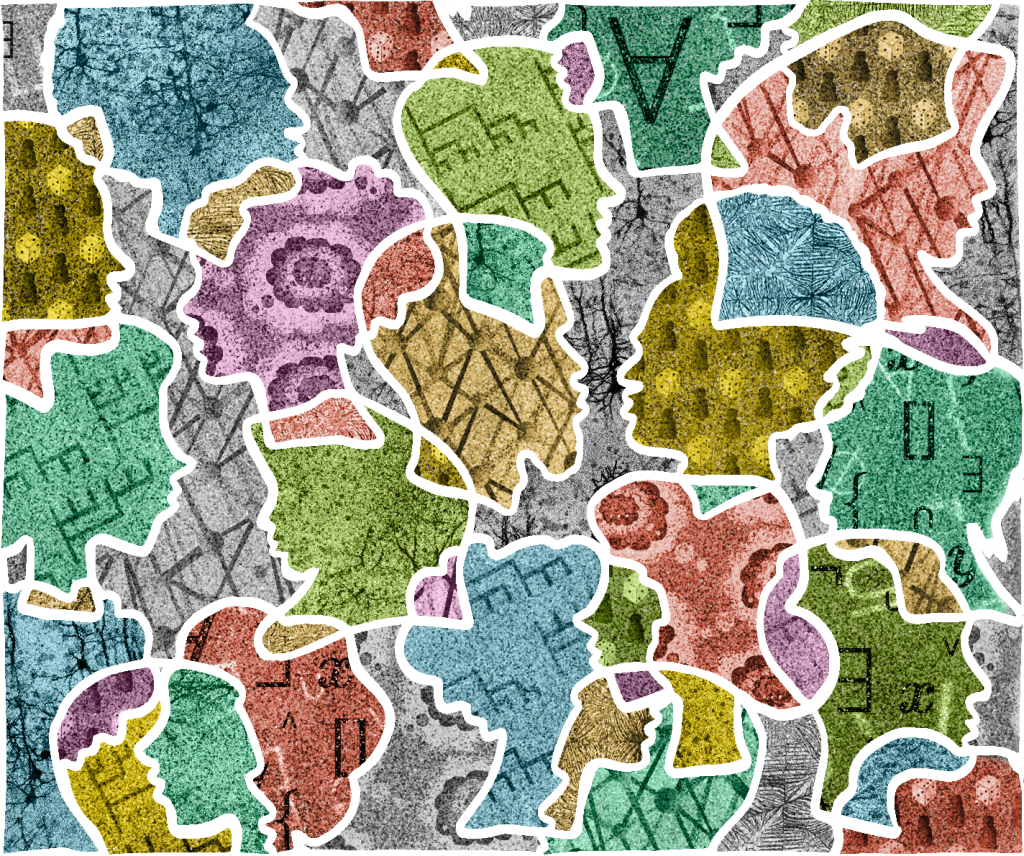6 October 2020, Iris Proff

Diverse groups work better than homogeneous groups. They come up with more creative solutions and have more in-depth discussions. A range of empirical studies pointed out these merits of diversity of gender and ethnicity, both in companies and in scientific research. However, the academic world has a notorious problem with diversity.
In 2016, 49 percent of PhD graduates in the Netherlands were women. When considering all researchers however, this number dropped to 26 percent. Thereby the Netherlands had the lowest ratio of female researchers among all European countries. The gender gap in academia is shrinking from year to year, but it is still far from being resolved. In technical fields, such as computer science or engineering, men outnumber women by far.
Little data is available for other forms of diversity, such as diversity of ethnicity, sexual orientation, cultural and socio-economic background or physical impairment. Nevertheless, they all pose similar problems. The path to higher academic positions is long and competitive. Aspects of you, that should not matter to perform well in academia, still influence how hard it is to climb to the top of the academic ladder.
Diversity Journal Club
- The diversity journal club of the Faculty of Science meets monthly to discuss a text about diversity in research and education. All members of the faculty are welcome to join.
Diversity at the ILLC
The research we conduct at the Institute for Logic, Language & Computation is radically interdisciplinary. We have cognitive scientists and musicologists building computer models of human listening. Philosophers, logicians and linguists collaborate to uncover the principles of language and reasoning. Computer scientists combine methods from social sciences, AI and game theory to work out better ways to vote. These are only examples of the diverse mix of disciplines at our institute, each of which brings a different set of skills and perspectives to the table.
Being interdisciplinary sometimes makes it more effortful to communicate with one another. You might find yourself in a conversation with a colleague, who’s working in a completely different field, using terms and techniques you have never heard of. Yet, you might end up asking exactly that out of the ordinary question that will inspire your colleague to look at her research in a new way.
We would not be able to do the research we do if we all had the same expertise. However, regarding many other aspects, we are not as diverse as we would like to be. Not only individuals from different scientific backgrounds contribute distinct and valuable perspectives – the same holds for people who differ along dimensions such as age, gender or cultural background. Even though science tries to be unbiased, the questions researchers ask and the conclusions they draw will often be coloured by their personal experiences. A good way to avoid bias is thus to include people with diverse life experiences.
We recently formed a diversity committee addressing these issues at our institute. We want to create an inclusive atmosphere, in which each of our staff members and students feels welcomed and appreciated, regardless of their background and identity.
The diversity committee is a point of contact for everyone at the institute, including Bachelor and Master students, who face issues or simply have questions related to diversity, equity and inclusion. Its members are dedicated to stay up to date with the diversity policies of the university and to advise the institute management on diversity related issues.
Source: ILLC self-evaluation 2012-2017
Why is being inclusive so hard?
As much of the research at the ILLC is dedicated to the study of language, we acknowledge its power. Rethinking the language one uses can precede changes in one’s attitude and behaviour. On a larger scale, a change of language can also expose controversial issues – just think of the heated debates around gender neutral language. Using respectful and inclusive language is not sufficient to create a diverse environment, but it is certainly necessary.
However, it is not always obvious which behaviours or phrasings can be hurtful to someone. Someone who behaves in a sexist or racist way might do so without being aware of it. Research by the group around Mahzarin Banaji at Harvard University revealed that most people show such implicit biases. They find it easier to associate white faces with positive words and black faces with negative words. Similarly, people associate male terms more easily with science and career, and female terms with family and liberal arts. Zooming in on the source of such implicit biases, Katrin Schulz and Leendert van Maanen just launched a large research project at the ILLC. They will investigate how stereotypes used in media create implicit biases in media consumers.
The implicit nature of biases is what makes it so hard to create a truly inclusive environment – even if everyone agrees to treat each other with respect. A homosexual student might feel excluded by a seemingly innocent claim such as “This is the age when children start being interested in the other gender”, stated in a lecture. A female researcher might feel she is not taken seriously, when someone is surprised to hear she completed her PhD in artificial intelligence – even if the intention was good.
Overcoming implicit biases requires explicit effort. The diversity committee at the ILLC will organize workshops and a series of talks on diversity, equity and inclusion. We are aware that the diversity issue in academia has deep roots which lie outside of the scope of what we can achieve as an institute. But what we can do is to think about our behaviour and the language we use towards each other, in order to foster a diverse and welcoming research community.
Get involved
The diversity strategy of the ILLC is not set in stone, but is very much in the making. If you have any questions, suggestions or would like to be involved, don’t hesitate to reach out: diversity-illc@uva.nl.